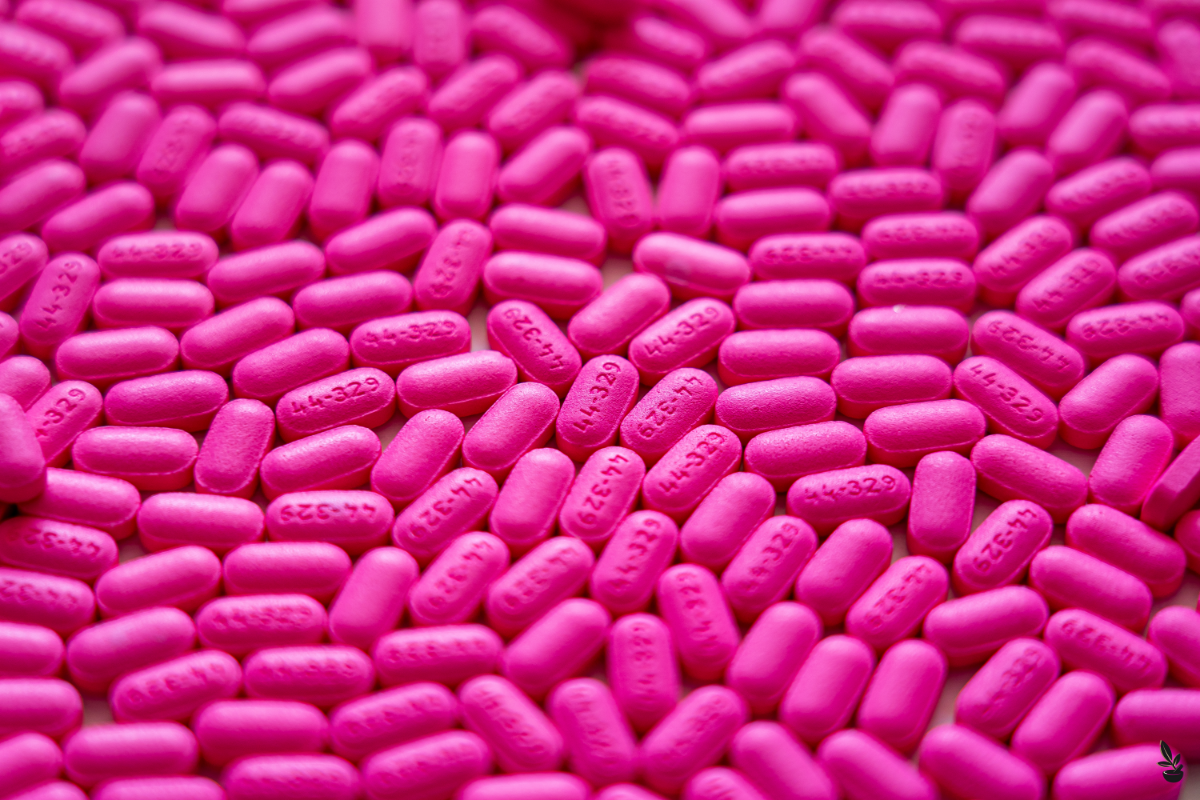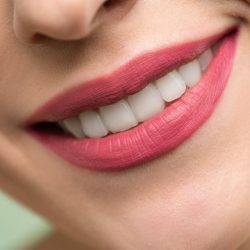Antihistamines, such as Cetirizine and Bilastine, play a pivotal role in dermatology, extending far beyond their traditional use in the management of itch and hives. This article, based on recent scientific research, aims to explore in depth the spectrum of action and efficacy of these drugs in various skin conditions. At the heart of this exploration, we will highlight the complex mechanisms of action of antihistamines and their classification, as well as the extent of their therapeutic potential in the treatment of dermatological conditions such as alopecia,acne, Darier’s dermatosis and even psoriasis.
Cetirizine 10 mg, a second-generation antihistamine, stands out for its ability to provide effective control of allergic reactions with reduced side effects. This systematic review will extend the discussion to off-label uses of H1 antihistamines, based on case studies and clinical research, revealing their pleiotropic effects and underestimated potential in dermatology.
We will also discuss the impact of histamine as a vasoactive compound and its role in physiological and pathological processes, to better understand how the intervention of antihistamines alters the course of various skin diseases.
[Warning: This article is provided for information purposes only and does not replace professional medical advice. Before taking any decision regarding the treatments described, it is imperative to consult a competent health professional. The data presented is based on the knowledge available at the time this article was written and may not be up to date with the latest scientific discoveries. Consulting a doctor or other healthcare expert is crucial before initiating, changing or stopping any medical treatment. We strongly advise against using the information in this article to self-diagnose or treat a health problem]
What are antihistamines?
Antihistamines are an essential class of medication, particularly in dermatology, to counter the effects of histamine, a key molecule in allergic reactions. Understanding them requires a detailed exploration of histamine and how these drugs work.
Histamine: Role and implications
Histamine, an organic compound, plays a crucial role in immune responses, acting as a neurotransmitter and helping to regulate gastric acidity. In the allergic context, it is responsible for symptoms such as itching, skin rashes and oedema. In the event of massive release, it can lead to severe reactions such as anaphylactic shock.
Action of antihistamines
These drugs act by blocking histamine receptors, in particular H1 and H2 receptors, thus preventing histamine from triggering its effects, in particular vasodilatation and increased vascular permeability. This mechanism helps to alleviate allergic symptoms.
Classification of antihistamines
- First-generation antihistamines: These drugs, such as Diphenhydramine or Chlorpheniramine, are characterised by their ability to cross the blood-brain barrier. This can lead to significant sedative effects. In addition, their anticholinergic effects can cause dry mouth, blurred vision and urinary retention. Despite these effects, they remain useful in certain clinical contexts because of their rapid onset of action.
- Second-generation antihistamines: Including drugs such as Cetirizine and Bilastine, this category is less likely to cause sedation, as these chemicals cross the blood-brain barrier less easily. They are preferred for long-term treatment, particularly for chronic dermatological conditions. These antihistamines are better tolerated because they have less effect on anticholinergic receptors.
What Cétirizine 10 mg is used for
Cetirizine, a second-generation antihistamine, is widely used in dermatology thanks to its specific properties and effective mechanism of action against various skin disorders.
Description and properties of the medicinal product Cétirizine 10 mg
Cétirizine, often administered at a dose of 10 mg, is distinguished by its ability to control allergic reactions without causing excessive drowsiness, a significant advantage over first-generation antihistamines. It is known for its rapid onset of action, generally within an hour of ingestion, and its effect can last up to 24 hours.
Because of these characteristics, Cetirizine is often prescribed for chronic or seasonal allergic conditions, including skin manifestations. Its formulation is easy to take, making it suitable for regular, long-term use in the management of allergic symptoms.
When should Cétirizine 10 mg be taken?
Cétirizine 10 mg is a medicine used to treat allergy symptoms. It is important to follow the dosing instructions for optimal efficacy and safety.
- Tablets: They should be swallowed with a glass of water to make them easier to swallow. It is advisable to take them whole without chewing or crushing them.
- Drops: For ease of use, drops can be poured directly into a spoon. They can also be diluted in a small amount of water before swallowing. This method is particularly useful for children or people who have difficulty swallowing tablets.
Recommended dosage
- Adults and children over 12: The usual dose is 1 tablet or 20 drops, once a day. This dosage is generally sufficient to control allergic symptoms over a 24-hour period.
- Children aged 6 to 12: The recommended dose is 1/2 tablet or 10 drops, twice a day. This division of the dose ensures constant relief throughout the day.
- Children aged 2 to 6: For younger children, the recommended dose is 10 drops a day, which can be administered in one or two doses depending on the child’s needs and tolerance.
Special cases
- Renal insufficiency: In the presence of renal insufficiency, it may be necessary to adjust the dose of Cetirizine. It is essential to consult a doctor to determine the appropriate dosage in these situations.
Is cetirizine 10 mg used in dermatology?
Cetirizine’s mechanism of action in dermatology centres on its ability to selectively block histamine H1 receptors. This action prevents histamine from binding to its receptors, thereby reducing the inflammatory reactions typical of allergic responses, such as itching, skin rashes and oedema.
This characteristic is particularly beneficial in the treatment of conditions such as chronic urticaria, where histamine plays a central role. Cetirizine helps to reduce the frequency and severity of skin rashes and relieve itching, thereby improving patients’ quality of life.
In addition, in the case of atopic dermatitis, although Cetirizine cannot cure the condition itself, it does help to effectively manage symptoms, particularly pruritus, enabling patients to better control their condition.
It is important to note that Cetirizine, like any medication, can have side effects, although these are generally mild and less frequent than those of first-generation antihistamines. The most common effects include mild drowsiness, headaches and dry mouth, although these symptoms are not systematic and vary from patient to patient.
Beyond controlling itching and hives
H1 antihistamines are commonly used in dermatology, mainly to control itching and urticaria. However, the widespread expression of the H1 receptor in different skin cells and the diverse biological functions of H1 antihistamines suggest additional therapeutic potential in this area. A literature search was carried out on PubMed and Embase, targeting articles reporting the use of antihistamines for purposes other than the control of itching and urticaria in dermatological practice. Several off-label uses of antihistamines were identified, including the treatment of alopecia, acne, Darier’s disease, eosinophilic dermatoses, paraneoplastic dermatoses, psoriasis, lichen nitidus, radiation dermatitis, cutaneous dysaesthesia and cutaneous malignancies.
What is histamine?
Histamine is a vasoactive compound involved in physiological and pathological processes such as pruritus, inflammation and vascular leakage. The discovery of widespread expression of the H-1 receptor on a wide variety of cell types in the skin, including mast cells, eosinophils, neutrophils, dendritic cells, macrophages, T cells, B cells, keratinocytes, endothelial cells, smooth muscle cells and neurons, has opened up new perspectives in the use of antihistamines in dermatology.
How do H1 antihistamines work?
H1 antihistamines act as specific antagonists of the histamine-1 receptor, inhibiting the release of histamine, prostaglandin D2 (PGD2), interleukin (IL) 3, 6 and 8, and tumour necrosis factor alpha (TNF-α) by mast cells and basophils. They also affect eosinophil chemotaxis and the expression of adhesion molecules and the release of chemokines by keratinocytes.
When is Cetirizine used in dermatology?
- Alopecia Areata: Antihistamines may modulate T-cell chemotaxis and have been used in combination with other therapies to reduce side-effects and improve hair regrowth.
- Acne: The involvement of histamine in the inflammatory response of acne suggests that the introduction of antihistamines could effectively prevent the formation of new acne lesions.
- Darier’s disease: The ability of cetirizine to attenuate eosinophil migration has been reported to relieve the burning sensation in a patient with vesiculobullar Darier’s disease.
- Psoriasis: Cetirizine has been shown to reduce adhesion molecule expression and inflammatory cell migration in psoriatic skin lesions.
The pleiotropic effects of H1 antagonists have been discovered, with studies indicating their potential utility in conditions such as alopecia areata, androgenetic alopecia, lichen planopilaris and psoriasis. Although the evidence base supporting the use of H1 antihistamines for dermatological purposes other than the control of itching and urticaria remains limited, further studies are encouraged, given the relatively low cost and safety of H1 antihistamines.
Is long-term use of Cetirizine 10 mg dangerous to health?
The long-term use of antihistamines in dermatology requires a balanced assessment of their potential benefits and risks. Although generally well tolerated, particularly in second-generation formulations such as Cetirizine and Bilastine, there are important considerations to be taken into account.
- Benefits: Over the long term, antihistamines offer continuous symptomatic relief for chronic conditions such as urticaria and atopic dermatitis. Their ability to effectively control itching and rashes can significantly improve patients’ quality of life. In addition, their safety profile makes them suitable for widespread use, particularly in patients who do not tolerate other medicines well.
- Risks: However, continued use can present challenges. For example, there is a risk of tolerance to antihistamines, particularly in patients with chronic urticaria. This may require dosage adjustments or a change of medication. In addition, although rare, long-term side effects may include sleep disturbance, confusion in the elderly, and interactions with other medications.
Monitoring and management
For long-term use of antihistamines, an appropriate monitoring and management approach is essential.
- Clinical monitoring: Regular follow-up is recommended to assess the efficacy of treatment and to monitor for side effects. This includes periodic consultations with a healthcare professional, assessments of symptom severity and, if necessary, adjustments to therapy.
- Management of side effects: If side effects appear, a reassessment of the therapeutic regime may be necessary. This may involve reducing the dose, switching to another antihistamine or adding other treatments to alleviate symptoms.
- Patient Education: It is crucial to inform patients about the nature of their treatment, expectations of efficacy and signs of potential side effects. A clear understanding of their treatment regime can help with better adherence and proactive management of their condition.
- Personalised approach: Given the variability of individual responses to antihistamines, a personalised approach is often required. This involves taking into account the particularities of each patient, such as their medical history, other medications taken and their living conditions.
Natural alternatives to Cetirizine 10 mg available in pharmacies
- Stinging Nettle, a common herb in natural medicine, may also act as a natural antihistamine. According to one study, 58% of participants found relief from their symptoms thanks to the use of freeze-dried nettle, and 69 participants judged it to be more effective than a placebo. The dosage used in this study was 300 milligrams per day.
- Quercetin is an antioxidant naturally present in onions, apples and other produce. A 2007 study found that it even reduced the respiratory side-effects of allergies in rats by reducing the inflammatory response of the airways. Quercetin can be consumed via the diet or as a dietary supplement.
- Bromelain is a compound found mainly in pineapples, but is also available in supplement form. It is thought to be effective against respiratory problems and inflammation associated with allergies. One study suggests a dosage of 400 to 500 mg three times a day.
Source:
- Use of H-1 Antihistamine in Dermatology: Morethan Itch and Urticaria Control: A Systematic ReviewChang-Yu Hsieh .Tsen-Fang TsaiReceived: February 27, 2021
- Skin Pharmacol Physiol. 2005. Antihistamines in dermatology







